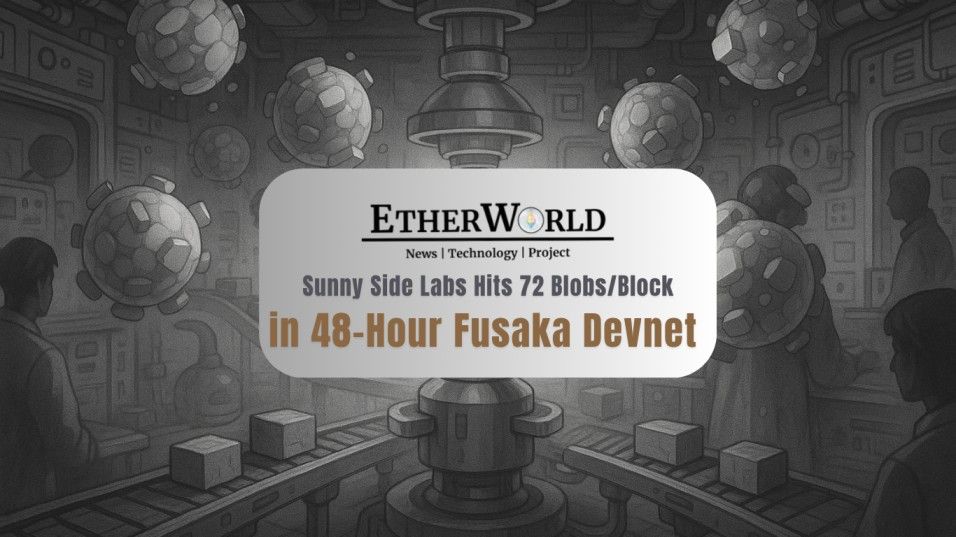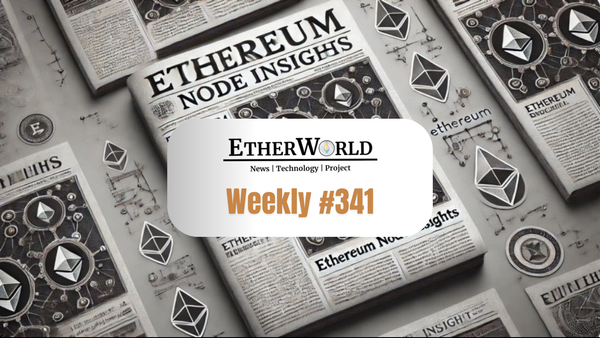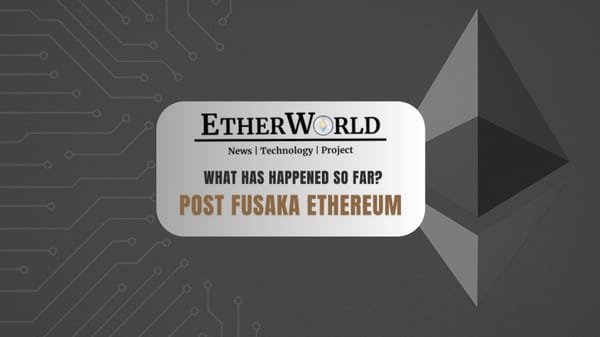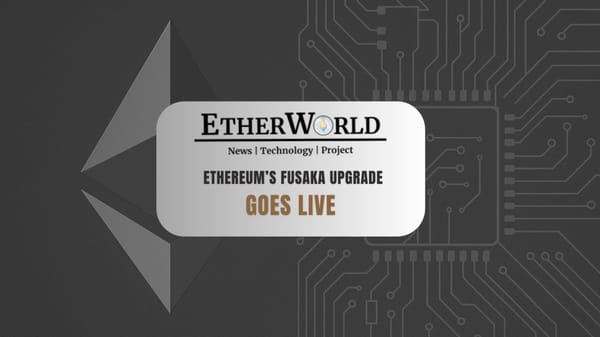Sunny Side Labs has completed an extensive 48-hour stress test on a mixed 128-node Fusaka Devnet, pushing blob transaction throughput to 72 blobs per block. The results demonstrate both consensus-layer and execution-layer clients can handle sustained high-load conditions, i.e., vital proof points ahead of Devnet 3.
Test Overview & Setup
Sunny Side Labs configured a 128-node Devnet combining both consensus-layer (CL) and execution-layer (EL) clients. Each node was tasked with producing and validating blocks containing 72 blobs, simulating heavy data workloads. The network operated continuously for 48 hours to assess long-duration stability under peak blob-throughput conditions.
Key Performance Results
Both consensus layer (CL) and execution layer (EL) clients successfully maintained 72 blobs per block throughout the entire 48 hour test period, marking the highest sustained blob rate achieved to date and demonstrating that the network can handle intense, continuous data loads.
All major clients showed remarkable stability under pressure, uniformly handling the increased load without any unexpected crashes, forks, or errors during the two day test window, underscoring the maturity of client implementations.
Despite the larger block payloads, block propagation times stayed well within acceptable limits, indicating that the network was able to distribute heavier blocks without introducing significant latency or bottlenecks across nodes.
When the network bandwidth was artificially capped at 30 Mb/s, average throughput dipped to around 60 blobs per block, highlighting that transient traffic bursts not client performance become the primary bottleneck in constrained environments.
In end to end initialization tests, every client completed a full genesis sync successfully with the sole exception of Geth which is awaiting a minor fix, confirming that clients are broadly ready for large scale network initialization under the proposed Fusaka conditions.
Conclusion
By validating 72 blobs per block over 48 hours, Sunny Side Labs has provided crucial evidence that Ethereum clients can handle the proposed Fusaka upgrade’s high-throughput demands. These benchmarks will inform go/no-go decisions for Devnet 3 and guide client optimizations to ensure a resilient, performant network.
If you find any issues in this blog or notice any missing information, please feel free to reach out at yash@etherworld.co for clarifications or updates.
Related Articles
- Ethereum Fusaka Devnet 0 Coming Soon
- Will Fusaka Be Ready in Time? Vitalik's 2025 Vision
- Glamsterdam: The Next Upgrade After Fusaka
- Ethereum Developers are Rethinking Transaction Signatures & Authority
- Censorship Resistance Vs Scalability
Disclaimer: The information contained in this website is for general informational purposes only. The content provided on this website, including articles, blog posts, opinions, and analysis related to blockchain technology and cryptocurrencies, is not intended as financial or investment advice. The website and its content should not be relied upon for making financial decisions. Read full disclaimer and privacy Policy.
For Press Releases, project updates and guest posts publishing with us, email to contact@etherworld.co.
Subscribe to EtherWorld YouTube channel for ELI5 content.
Share if you like the content. Donate at avarch.eth.
You've something to share with the blockchain community, join us on Discord!








